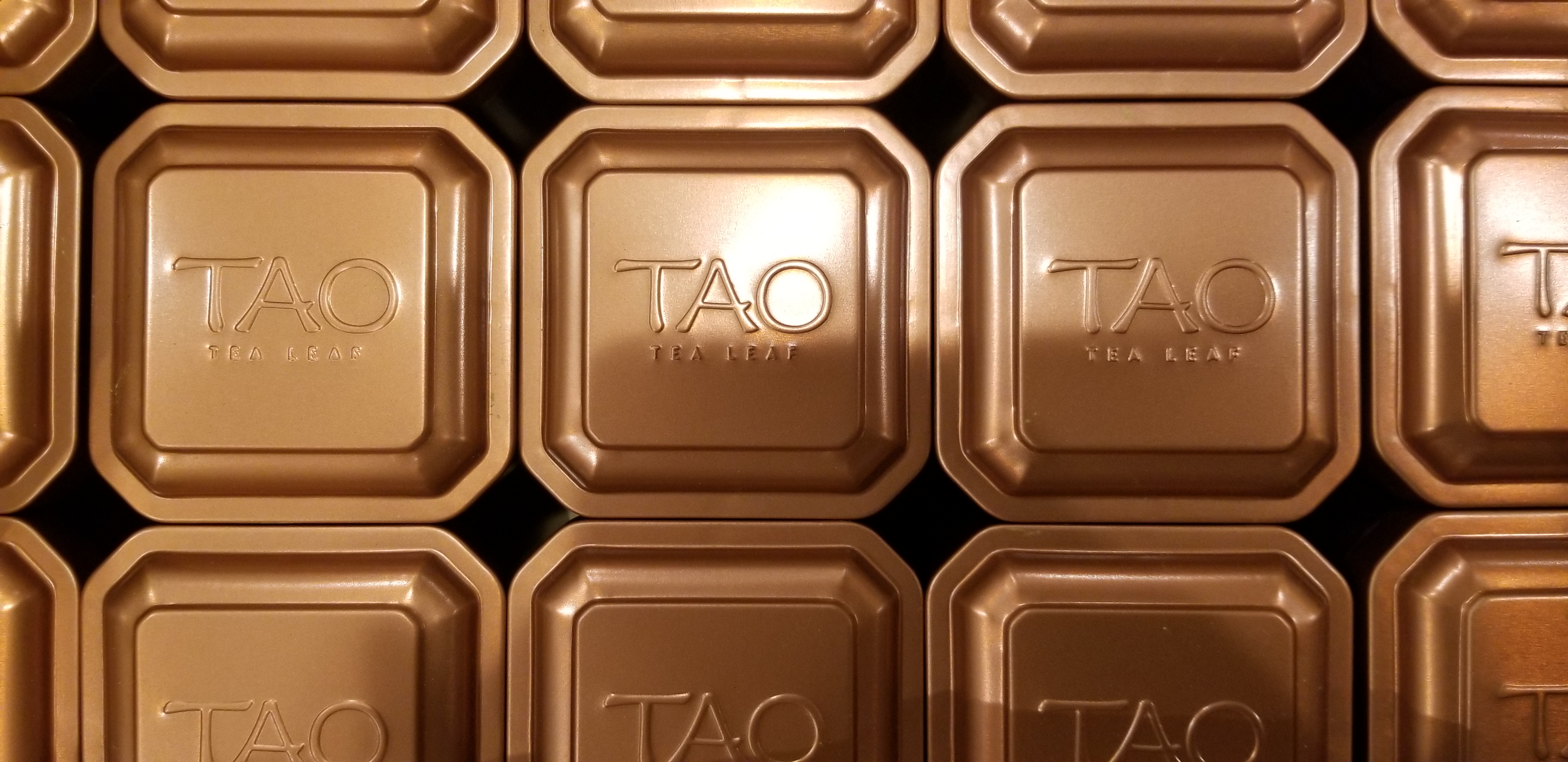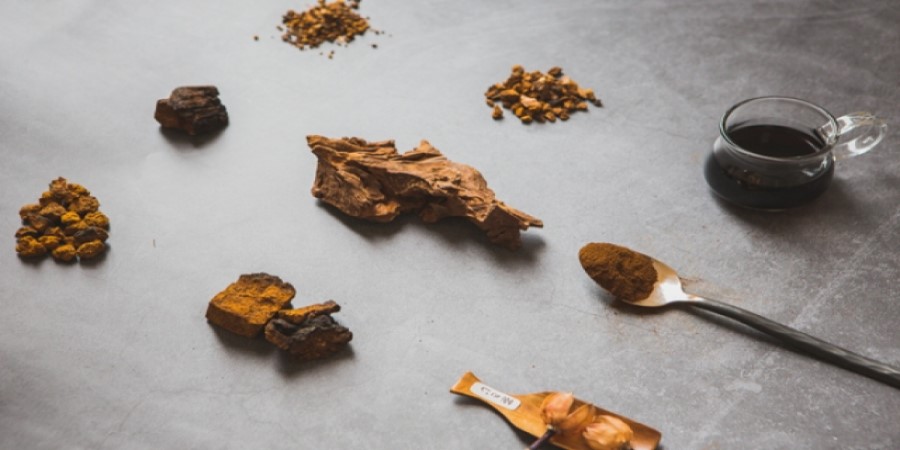 Loading... Please wait...
Loading... Please wait...- ORDER BY PHONE: 647-728-3858
- Order Status
- Wish Lists
- My Account
View Cart
Traditional Jasmine Green Tea Scenting Process
Posted by Tao Wu on 27th Nov 2013
Jasmine tea is a precious species of scented tea. It is has a history dating over 700 years old. Some say that you can smell the freshness of springtime in quality jasmine tea. Its taste is mellow and refreshing. It has a durable and fresh fragrance.
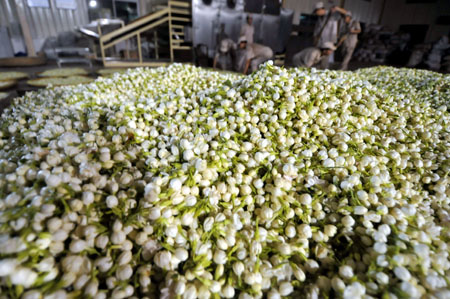
August is a very important month for jasmine tea. The best quality of jasmine flowers are ready to be picked soon after mid-July. The best quality will be processed with spring green tea to make high quality jasmine green tea.
The main goal of the traditional jasmine green tea process is to transfer the fragrance and scent from the flowers to the green tea. The process of scenting jasmine tea is strictly particular; usually it take 3-9 times of re-scenting, even more for some special grades.(Re-scenting is after the green tea absorption, the flowers will be filtered, and use another fresh flowers release fragrance, which make the jasmine tea still have nice fragrant and taste after many steeps.)
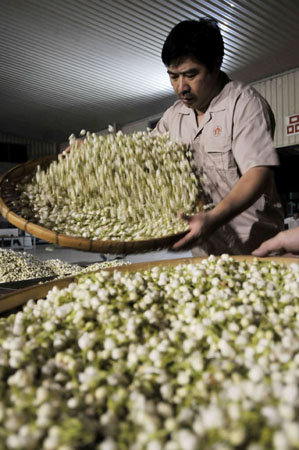
Basic Steps
Preparing the green tea prior to scenting → maintaining the flowers → layering the flowers with the green tea → dividing the mixture into sections → heaping → separating the flowers from the tea leaves → heating → cooling → re-scenting → taste sampling → packaging
1.Preparing the Green Tea
The high grade green tea is harvested in the spring and prepared prior to scenting, months before the jasmine flowers are harvested. The leaves are spread out indoors to prevent them from rotting before the jasmine flowers are ready.
2.Preparing the Jasmine Flowers
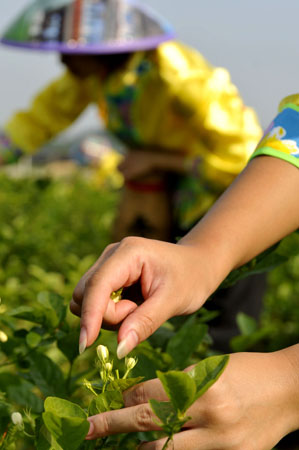



Since jasmine flowers open up during the night, they are harvested after 10 AM and brought to the manufacturer. The fresh flowers are then spread out thinly to allow for breathing and force their temperature to be between 32℃ and 36℃, which is the optimal range for encouraging the flowers to open. If their temperature drops to 30℃, the flowers are piled into heaps for more heat, and if the temperature rises to 38℃, the flowers are spread thinly to cool down. When all of the flowers are around 60% open, they are placed on sifters and shaken by hand to remove the green buds and flower stems. During this process, the flowers will open further. When the flowers are 80% open, they are ready to scent the green tea.
3. Layering
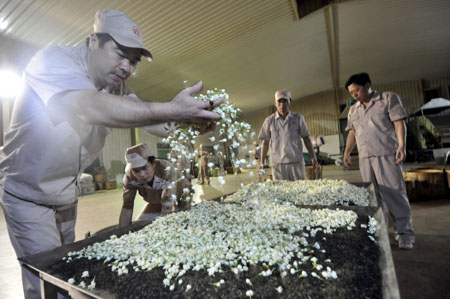
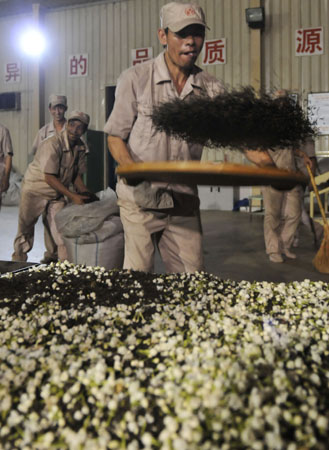
This step is considered to be the most important of all. After making a starting layer of jasmine flowers, green tea is placed on top to make a second layer, followed by more jasmine flowers, and so on until a certain height to form one heap. Each heap of layers will rise to a certain temperature and be left to sit for a certain amount of time. Depending on the intended grade, the amount of flowers, the temperature, the height of the heaps, and the time left to sit vary greatly. For an average grade, the wanted temperature is between 45℃ and 48℃ and the total time from Layering to Separating is 10 to 12 hours.
4. Tong Hua (Dividing the Mixture into Sections)
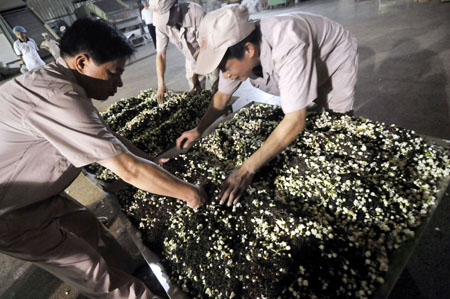
When the temperature of the heaps rises to between 40℃ and 48℃, usually taking 5 to 6 hours, they are divided into sections. This allows for cooling, promotes oxygen ventilation, and encourages the flowers to release more fragrance to the tea. The heaps usually take 0.5 to 1 hour to cool.
5. Shouduifuyin (Piling)

Once the heaps cool to about 1℃ to 3℃ above room temperature, the layered heaps are shoveled into piles 20 to 30 cm in height. After 5 to 6 hours, the piles should reach a temperature of 40℃ and the flowers should be fully opened and withered, light yellow, and have no scent left.
6. Separating
At this point, the scent from the flowers should be completely transferred to the tea leaves which should be slightly humid. The piles are placed in a sorting machine that separates the jasmine flowers from the tea leaves.
7. Heating
The tea leaves are then heated to remove excess water in preparation for packaging or possible re-scenting. The heating temperature is relatively high, generally between 90℃ and 110℃, so that the process is fast enough to retain the jasmine fragrance within the tea leaves. The standard humidity of the leaves for this step is 17% to 18%. After heating, the leaves are spread out to be as cool as possible, no higher than 40℃.
8. Re-scenting
Aimed at improving the degree of the tea, a few large fresh jasmine flowers are mixed into the leaves for about 6 to 8 hours in 8% humidity. The flowers are then removed and the leaves are left to cool to be ready for packaging.
9.Taste Sampling and Packaging
The jasmine green tea is sampled in order to determine the grade and then packaged into corresponding boxes.
Tip 1: Due to the processing technique of jasmine tea, the fresh tea should be drunk one week after the finished process, due to the baking step which promotes too much heat in Chinese health culture.
Tip 2: For high grade jasmine green tea, almost no flower petals should be present (with the exception of a whole flower for decoration).
Tip 3: For low grade and bad quality jasmine tea, the jasmine flowers from the end of the separating step are mixed in with unscented green tea.



